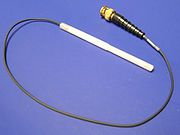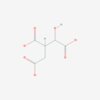Semantic search
| Term | Abbreviation | Description |
|---|---|---|
| International System of Units | SI | The International System of Units (SI) is the modern form of the metric system of units for use in all aspects of life, including international trade, manufacturing, security, health and safety, protection of the environment, and in the basic science that underpins all of these. The system of quantities underlying the SI and the equations relating them are based on the present description of nature and are familiar to all scientists, technologists and engineers. The definition of the SI units is established in terms of a set of seven defining constants. The complete system of units can be derived from the fixed values of these defining constants, expressed in the units of the SI. These seven defining constants are the most fundamental feature of the definition of the entire system of units. These particular constants were chosen after having been identified as being the best choice, taking into account the previous definition of the SI, which was based on seven base units, and progress in science (p. 125). |
| International Union of Pure and Applied Chemistry, IUPAC | IUPAC | The International Union of Pure and Applied Chemistry (IUPAC) celebrated in 2019 the 100th anniversary, which coincided with the International Year of the Periodic Table of Chemical Elements (IYPT 2019). IUPAC {Quote} notes that marking Mendeleev's achievement will show how the periodic table is central to connecting cultural, economic, and political dimensions of global society “through a common language” {end of Quote} (Horton 2019). 2019 is proclaimed as the International Year of the Periodic Table of Chemical Elements (IYPT 2019). For a common language in mitochondrial physiology and bioenergetics, the IUPAC Green book (Cohen et al 2008) is a most valuable resource, which unfortunately is largely neglected in bioenergetics textbooks. Integration of open systems and non-equilibrium thermodynamic approaches remains a challenge for developing a common language (Gnaiger 1993; BEC 2020.1). |
| International oxygraph course | IOC | International Oxygraph Course (IOC), see O2k-Workshops. |
| Internationale Gesellschaft fuer Regenerative Mitochondrien-Medizin | IGRMM e.V. | Organizer of |
| Interpolate points | Select Interpolate points in the Mark information window to interpolate all data points in the marked section of the active graph. See also Delete points and Restore points or Recalculate slope. | |
| Intracellular oxygen | pO2,i | Physiological, intracellular oxygen pressure is significantly lower than air saturation under normoxia, hence respiratory measurements carried out at air saturation are effectively hyperoxic for cultured cells and isolated mitochondria. |
| Intrinsic fluorophores | An Intrinsic flourophore is a naturally occurring fluorophore of which NADH, aromatic amino acids and flavins are examples. | |
| Ion-Selective Electrode TPP+ and Ca2+ | Ion-Selective Electrode TPP+ and Ca2+: ISE with 6 mm outer diameter shaft, for Stopper\white PVDF\angular Shaft\side+6.2+2.6 mm Port. O2k-TPP+ ISE-Module: 2 ISE. | |
| Ionomycin | Imy | Ionomycin (Imy) is a ionophore used to raise intracellular [Ca2+]. |
| Isocitrate | isocitrate, C6H5O7-3, is a tricarboxylic acid trianion, intermediate of the TCA cycle, obtained by isomerization of citrate. The process is catalyzed by aconitase, forming the enzyme-bound intermediate cis-aconitate. | |
| Isocitrate dehydrogenase | IDH | Isocitrate dehydrogenase forms 2-oxoglutarate from isocitrate in the TCA cycle. |
| Isolated mitochondria | imt | Isolated mitochondria, imt, are mitochondria separated from a tissue or cells by breaking the plasma membranes and attachments to the cytoskeleton, followed by centrifugation steps to separate the mitochondria from other components. |
| Isolated system | The boundaries of isolated systems are impermeable for all forms of energy and matter. Changes of isolated systems have exclusively internal origins, e.g., internal entropy production, diS/dt, internal formation of chemical species i which is produced in a reaction r, dini/dt = drni/dt. In isolated systems some internal terms are restricted to zero by various conservation laws which rule out the production or destruction of the respective quantity. | |
| Isomorphic | The term isomorphic refers to quantities which have identical or similar form, shape, or structure. In mathematics, an isomorphism defines a one-to-one correspondence between two mathematical sets. In ergodynamics, isomorphic quantities are defined by equations of identical form. If isomorphic quantities are not expressed in identical units, then these quantities are expressed in different formats which can be converted to identical untis. Example: electric force [V=J/C] and chemical force [Jol=J/mol] are ismorphic forces; the electrical format [J/C] can be converted to the chemical format [J/mol] by the Faraday constant. Units not only give meaning to the numerical value of a quantity, but units provide also an abbreviated common language to communicate and compare isomorphic quantities. In irreversible thermodynamics, isomorphic forces are referred to as generalized forces. | |
| Japanese Society of Mitochondrial Research and Medicine | J-mit | The Japanese Society of Mitochondrial Research and Medicine (J-mit) was founded to share the latest knowledge on mitochondrial research. J-mit is the biggest Asian society of mitochondrial research and medicine and is a member of ASMRM. |
| Jmax | Jmax | Jmax is the maximum pathway flux (e.g. oxygen flux) obtained at saturating substrate concentration. Jmax is a function of metabolic state. In hyperbolic ADP or oxygen kinetics, Jmax is calculated by extrapolation of the hyperbolic function, with good agreement between the calculated and directly measured fluxes, when substrate levels are >20 times the c50 or p50. |
| Journal indexing | Journal indexing allows publications to be found on search tools/databases. Each database might have different criteria of inclusion. | |
| Journal issue | An issue of a journal or periodical is a number, which typically indicates how many times a volume of the journal has been published in sequence. | |
| Journal publication | In most cases journal publication {Quote} will not be affected by posting a preprint. However, there are some publishers that do not consider papers that have already appeared online. We strongly recommend that you check all journals that you might submit to in advance {end of Quote}. A list of academic journals by preprint policy is available. | |
| Journal volume | The volume of a journal or periodical is a number, which in many cases indicates the sequential number of years the journal has been published. Alternatively, the volume number may indicate the current year, independent of the year in which the journal published its first volume. A volume may be subdivided into issues. |


